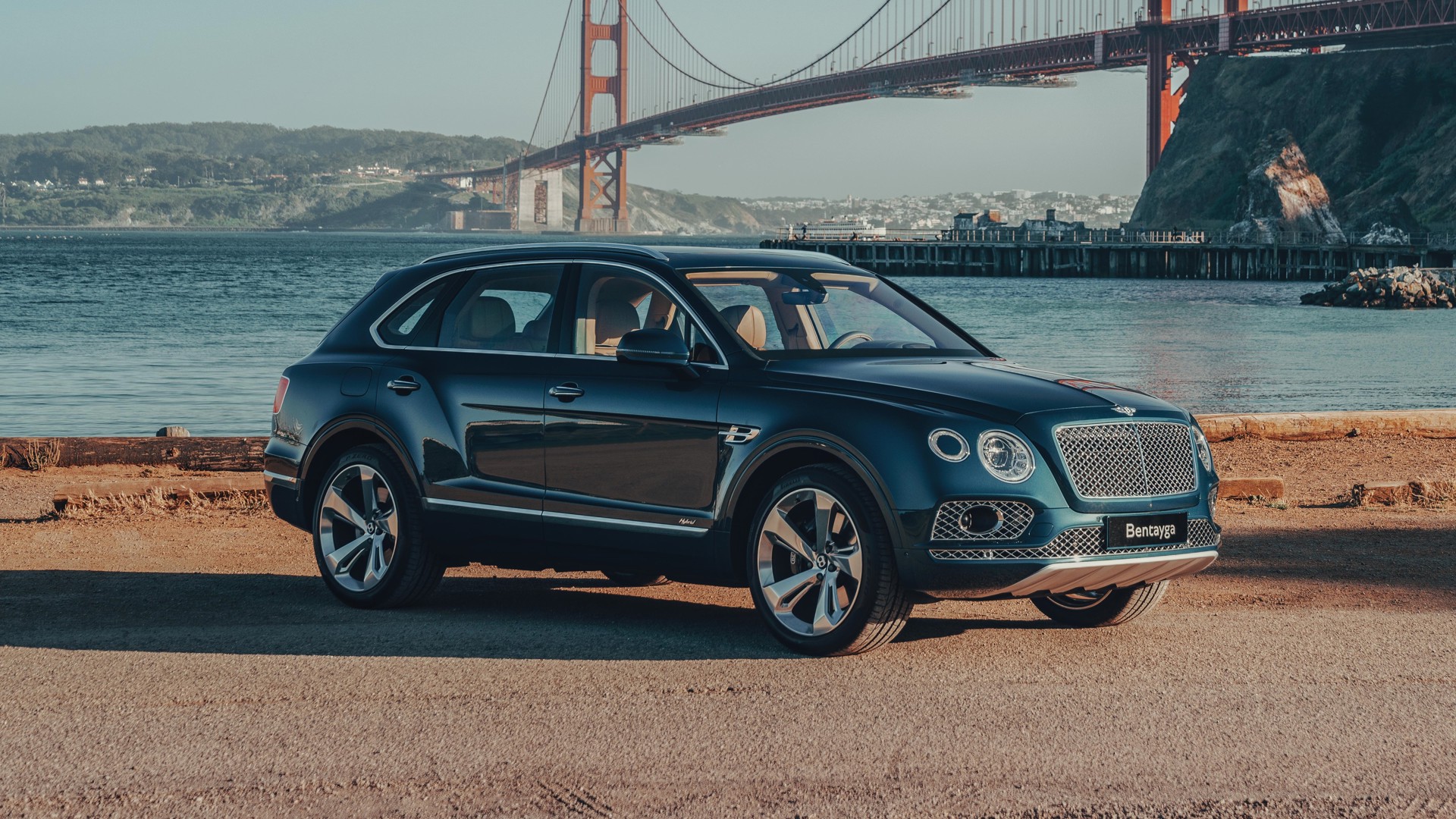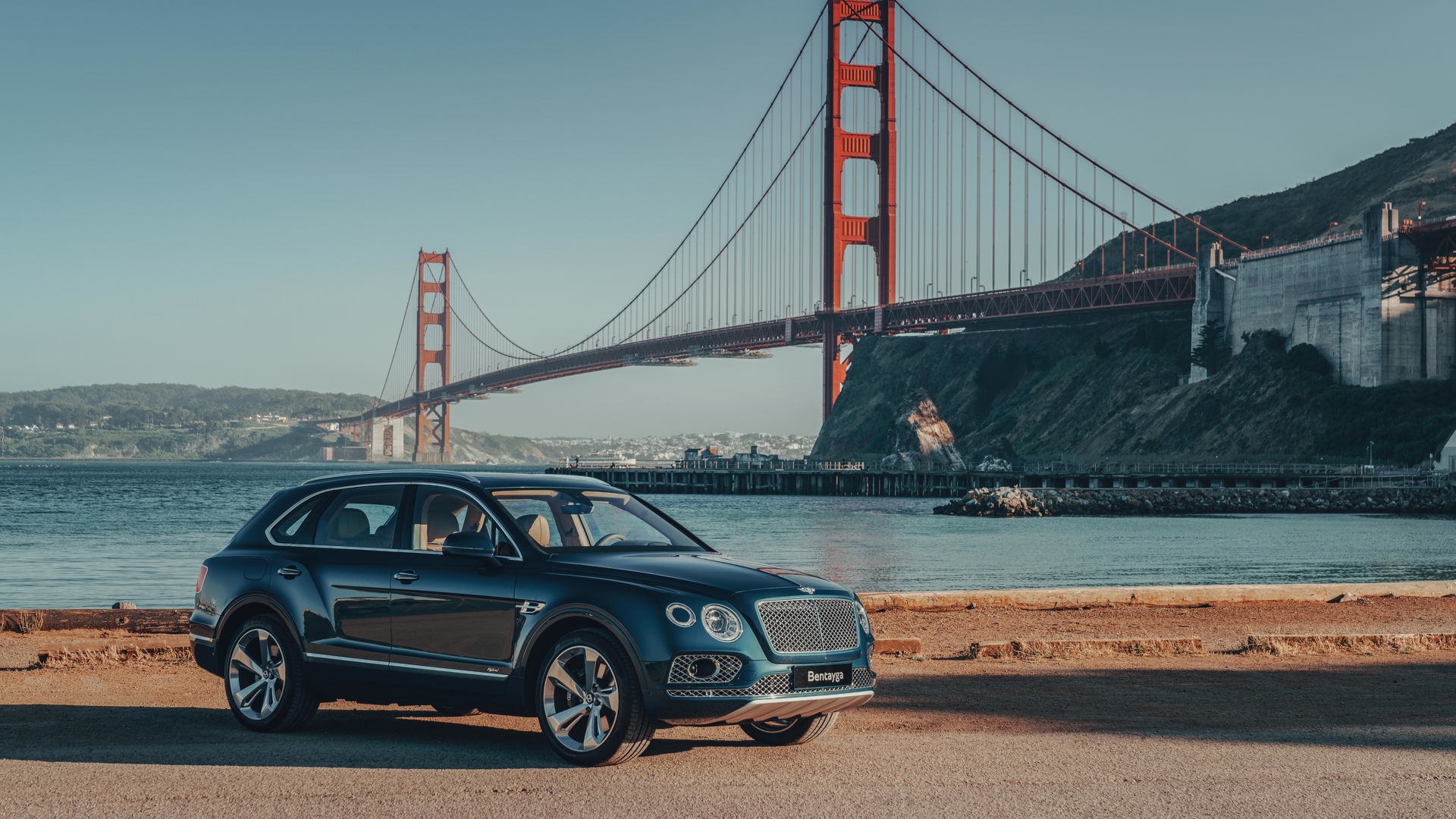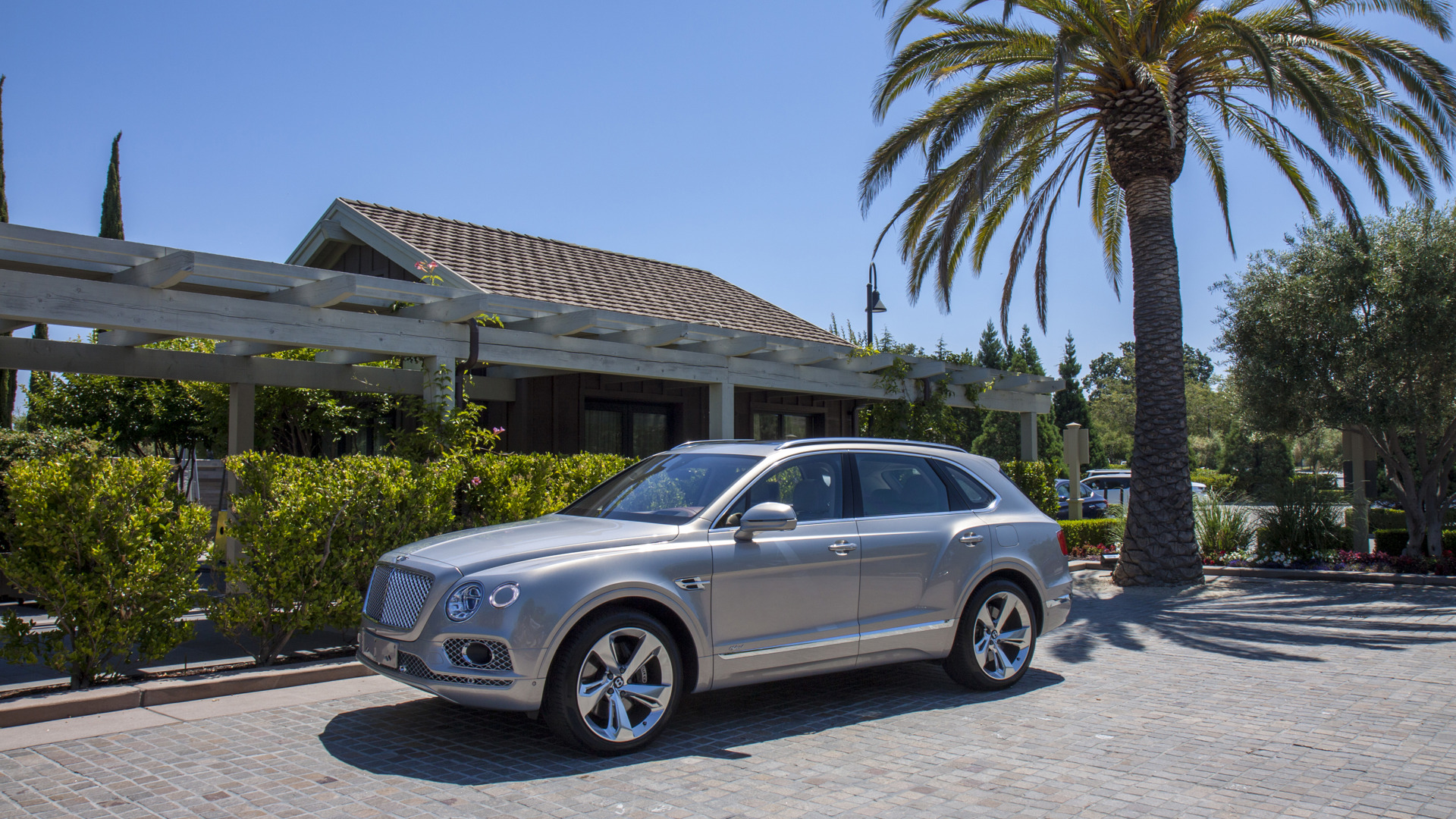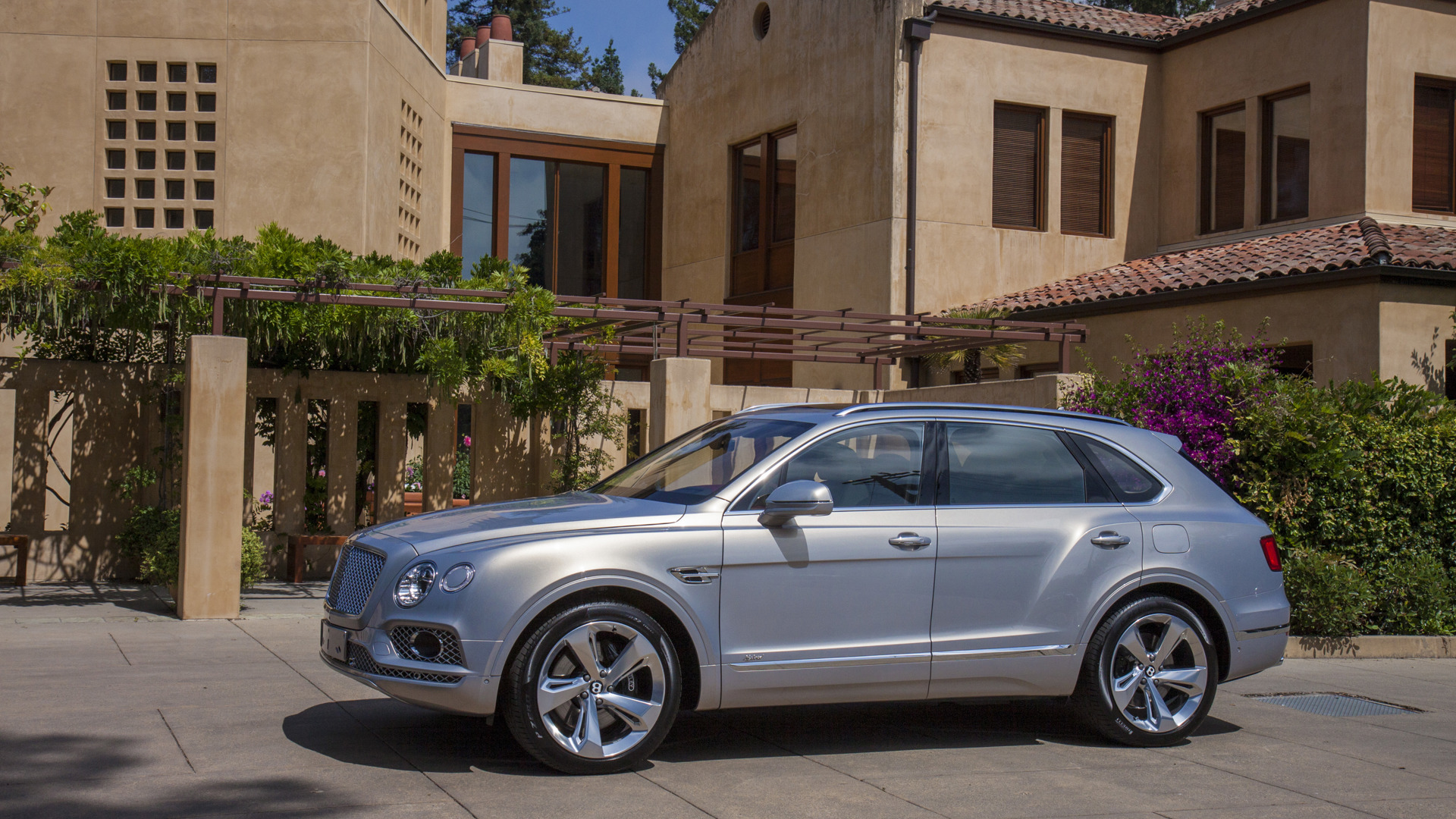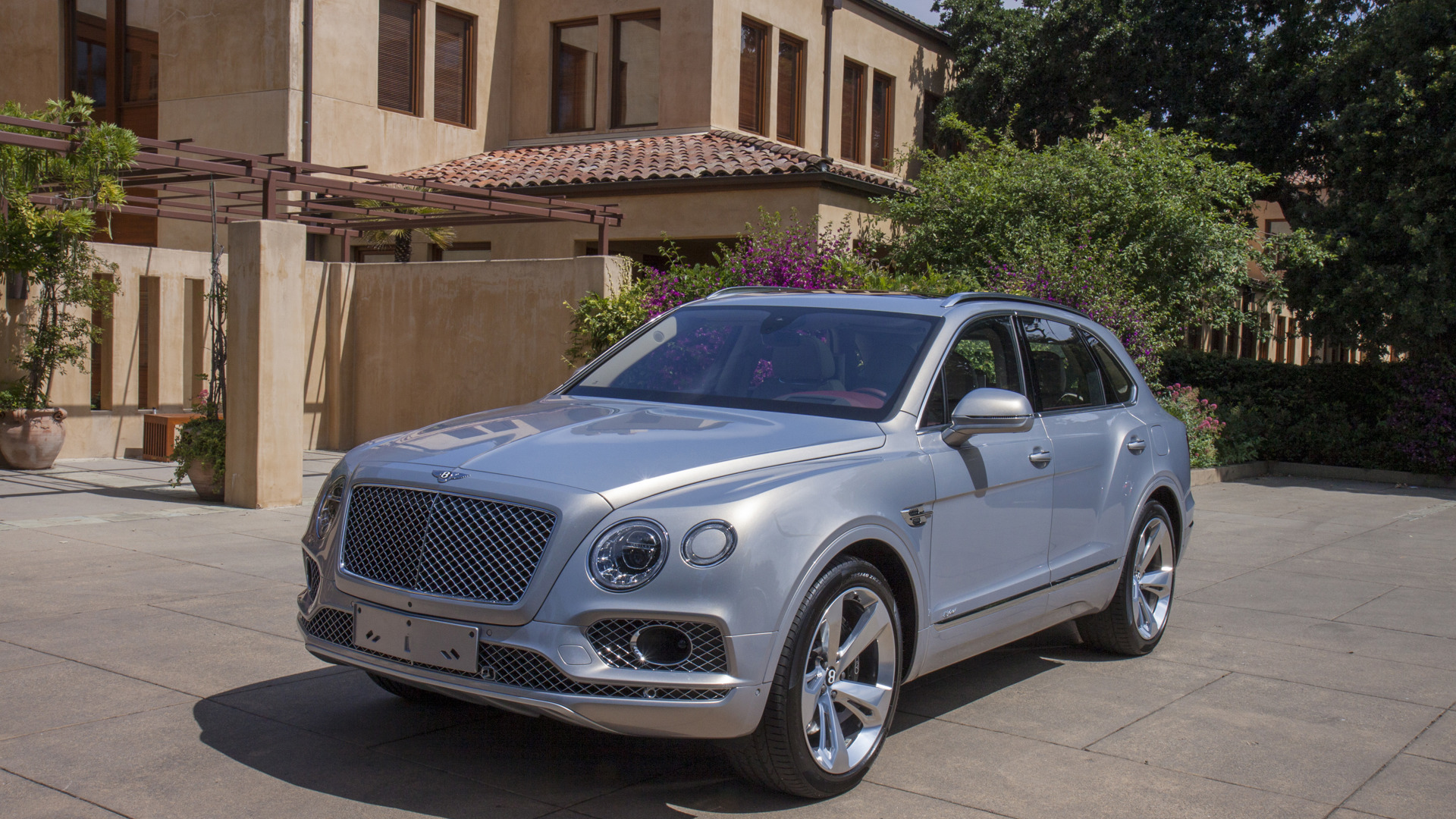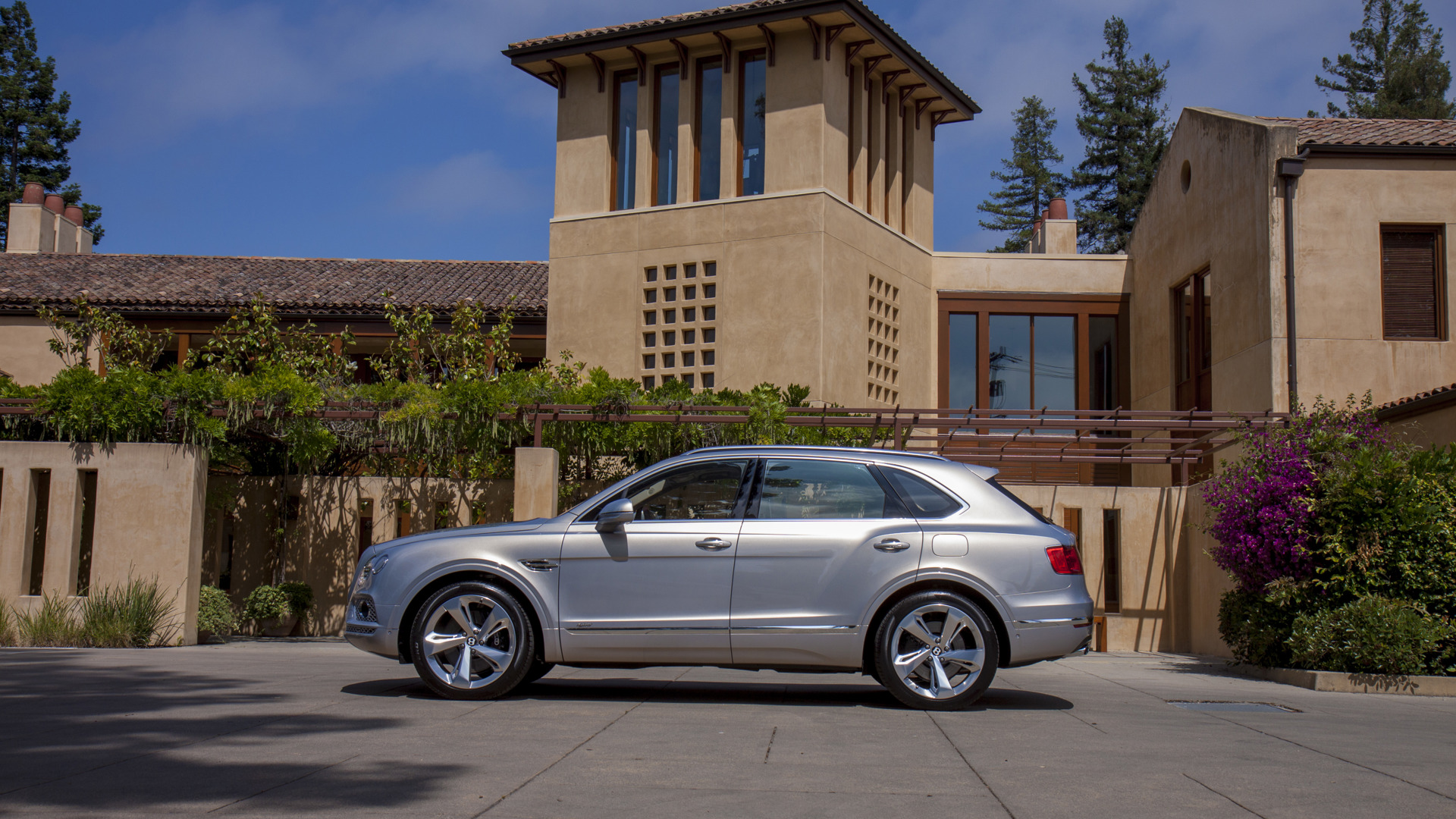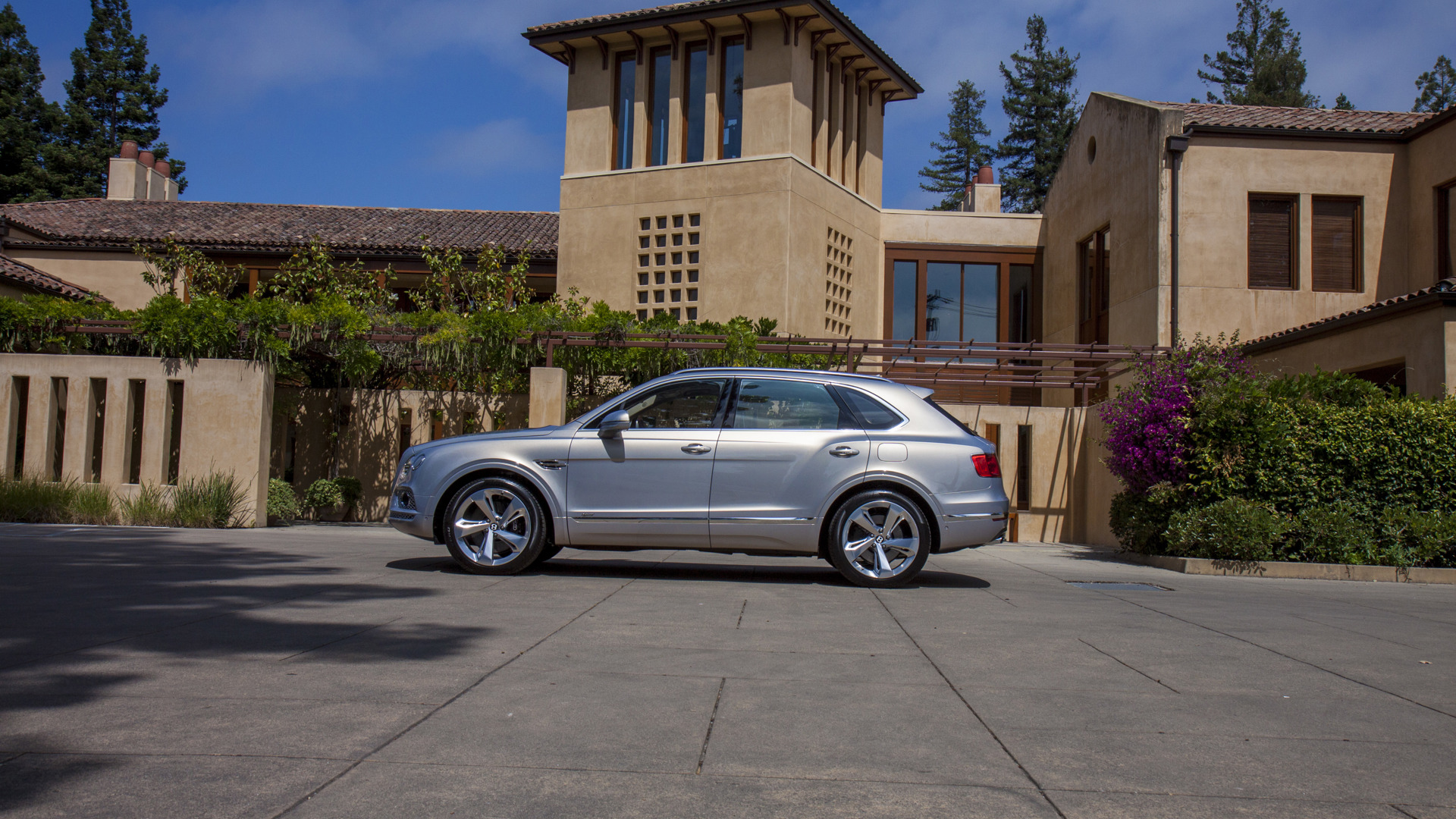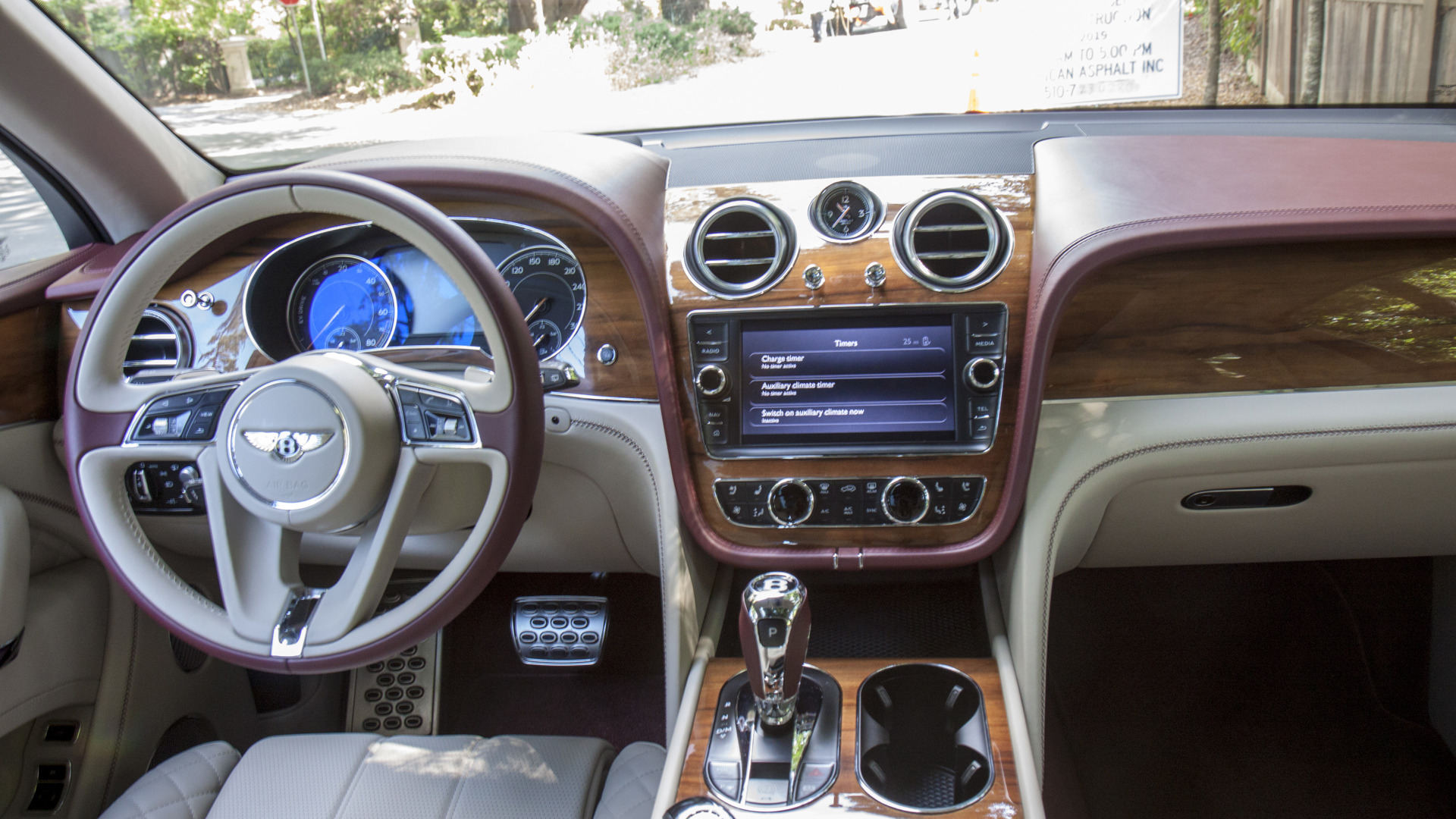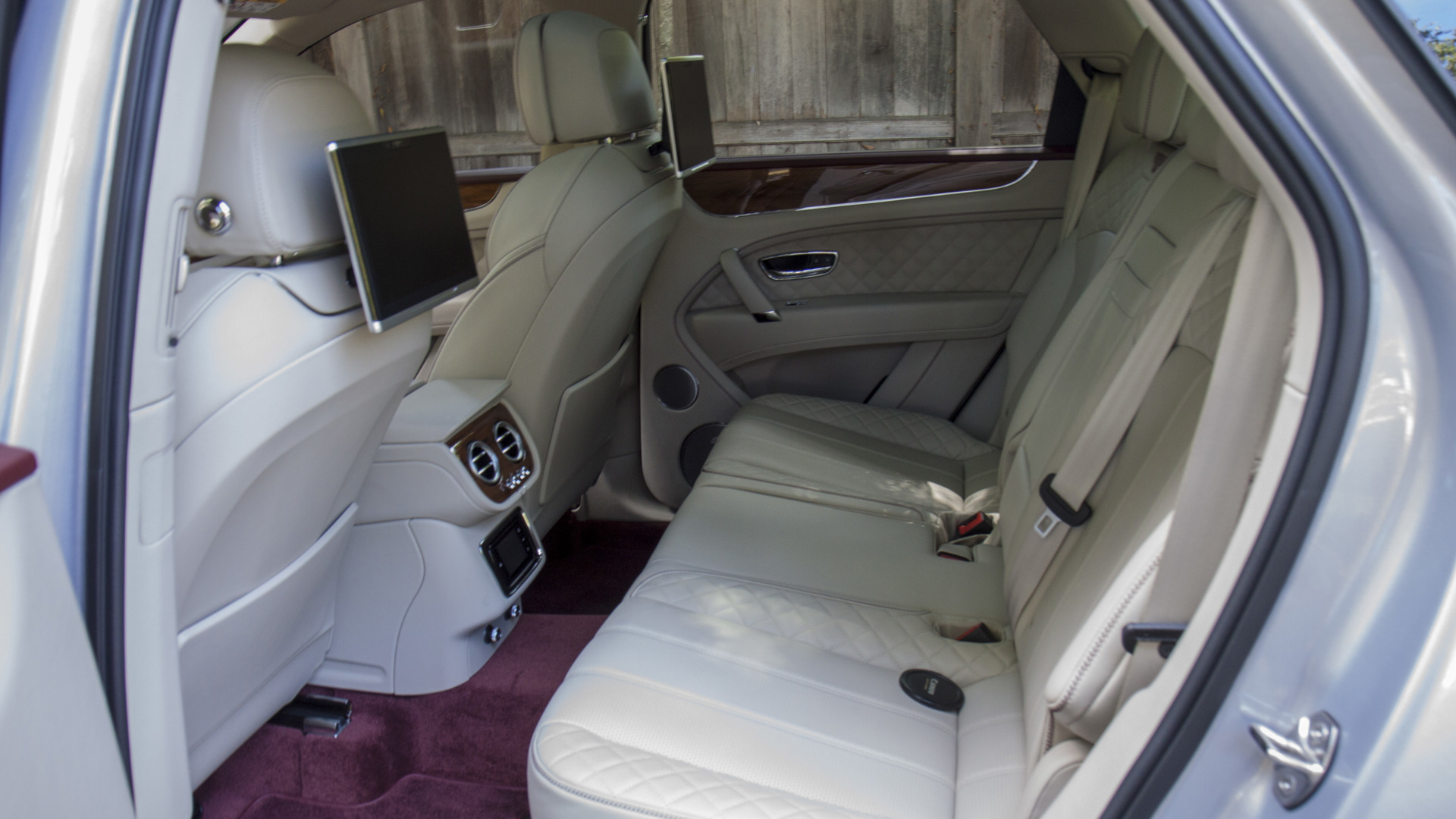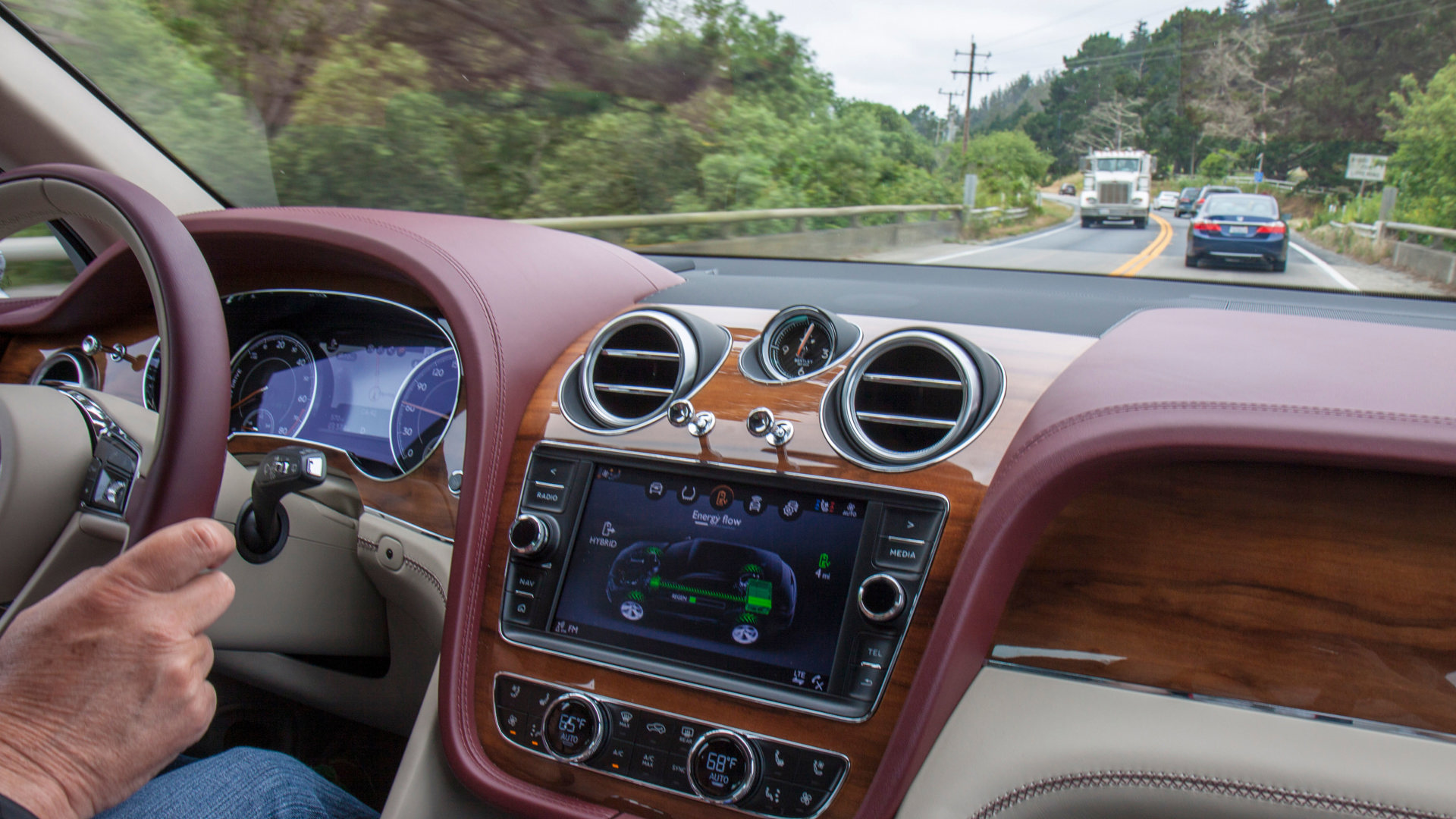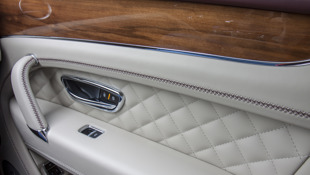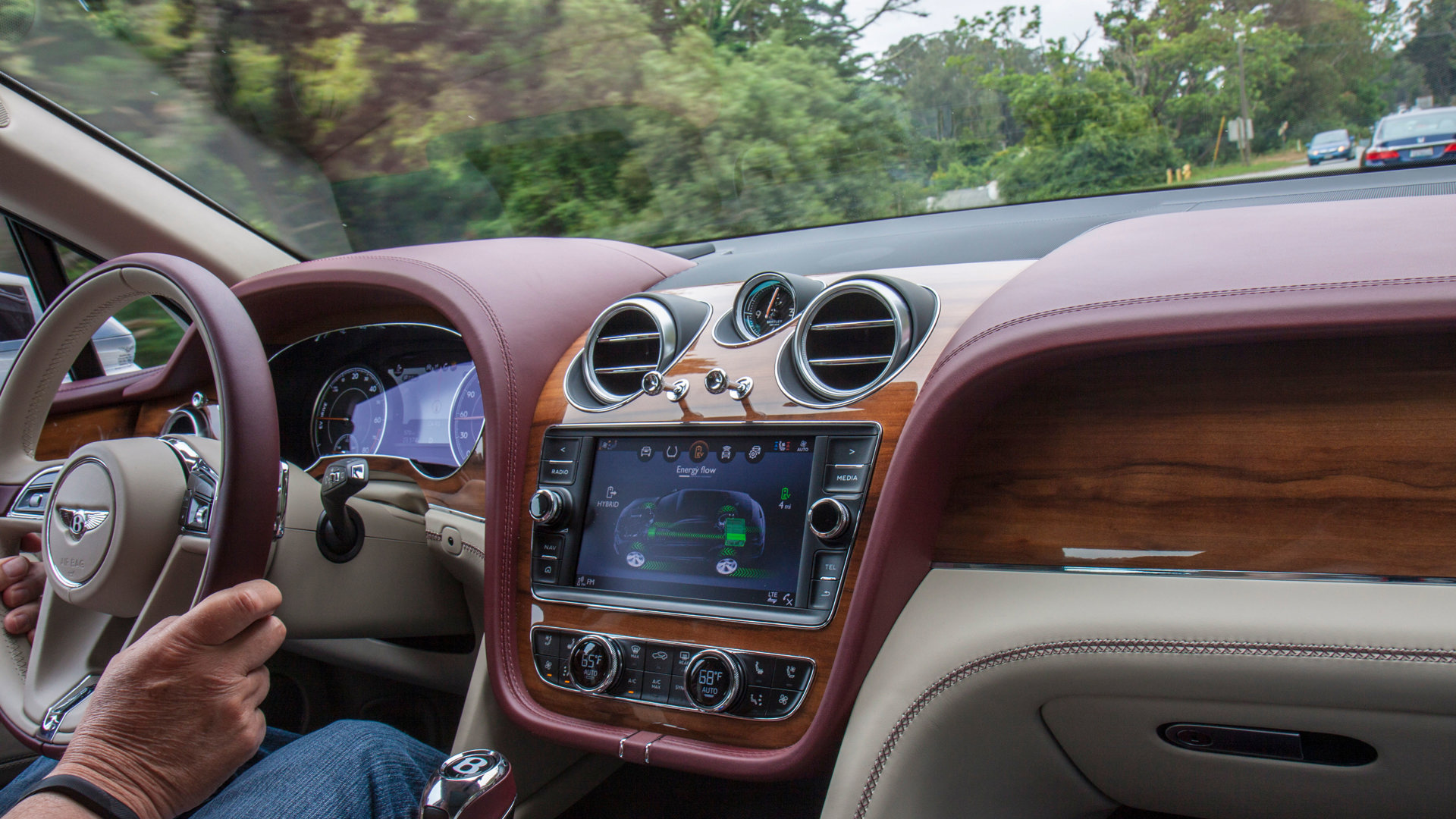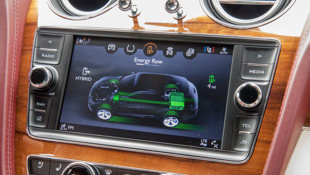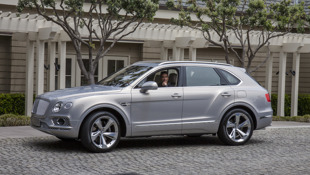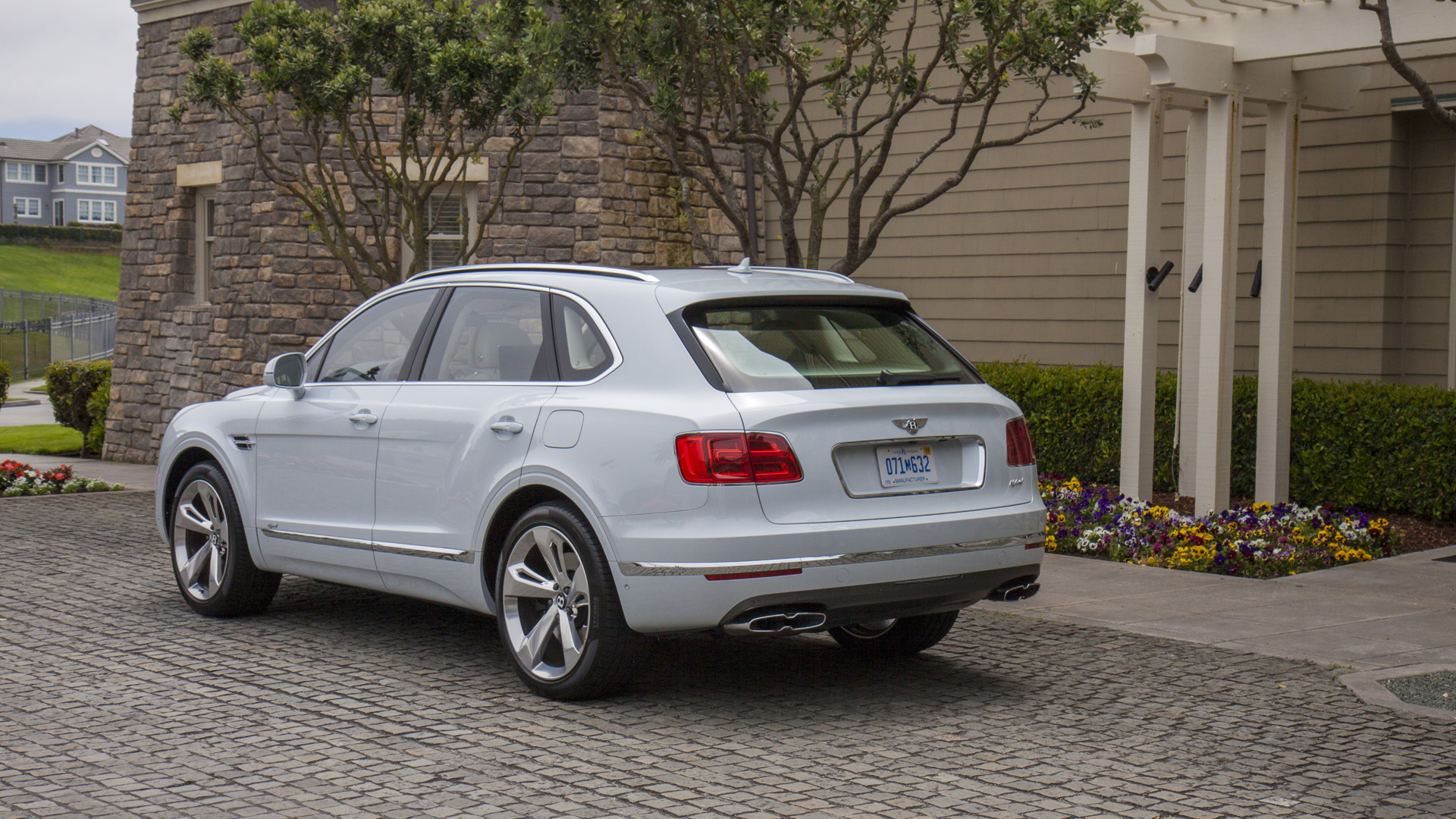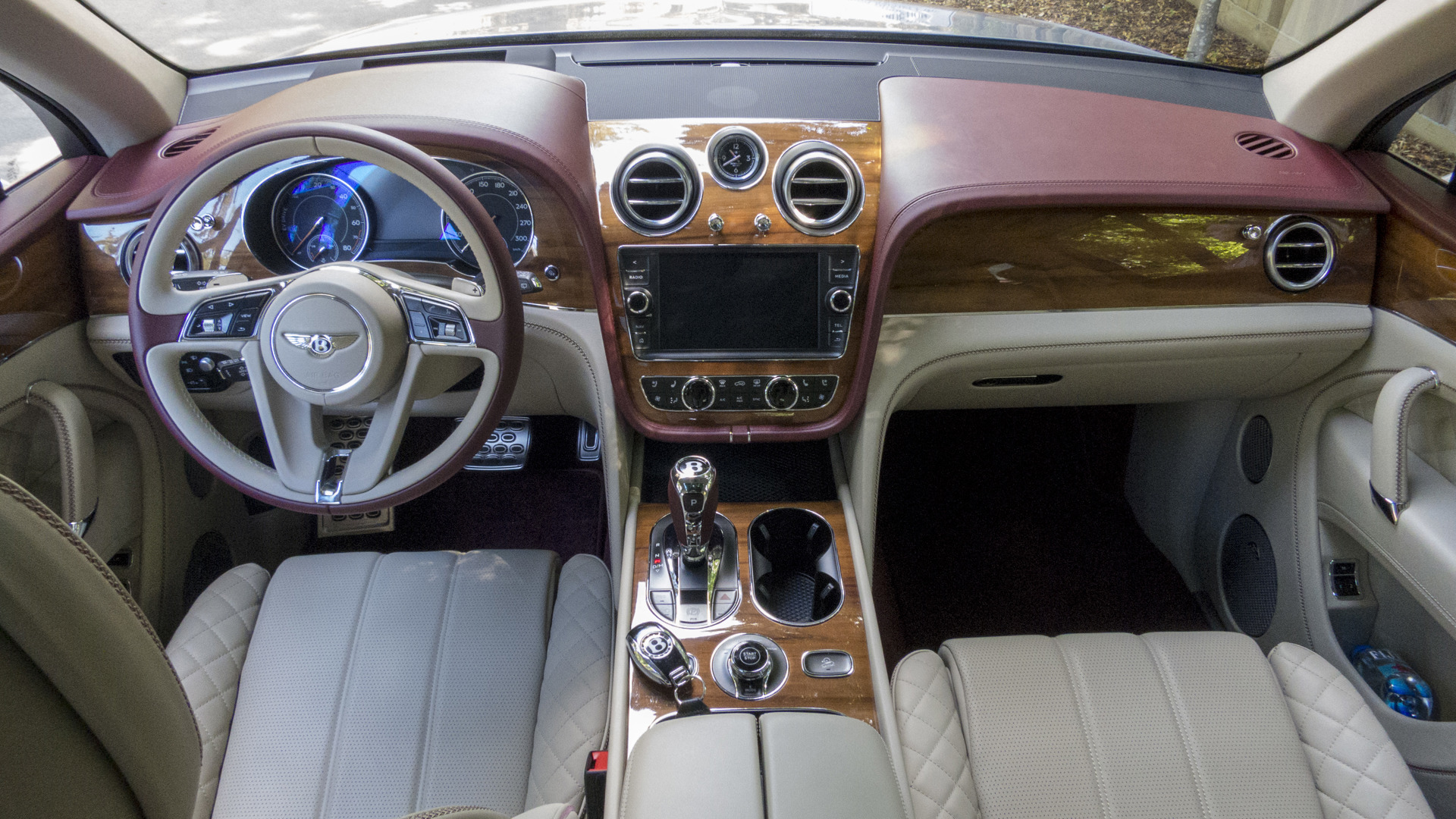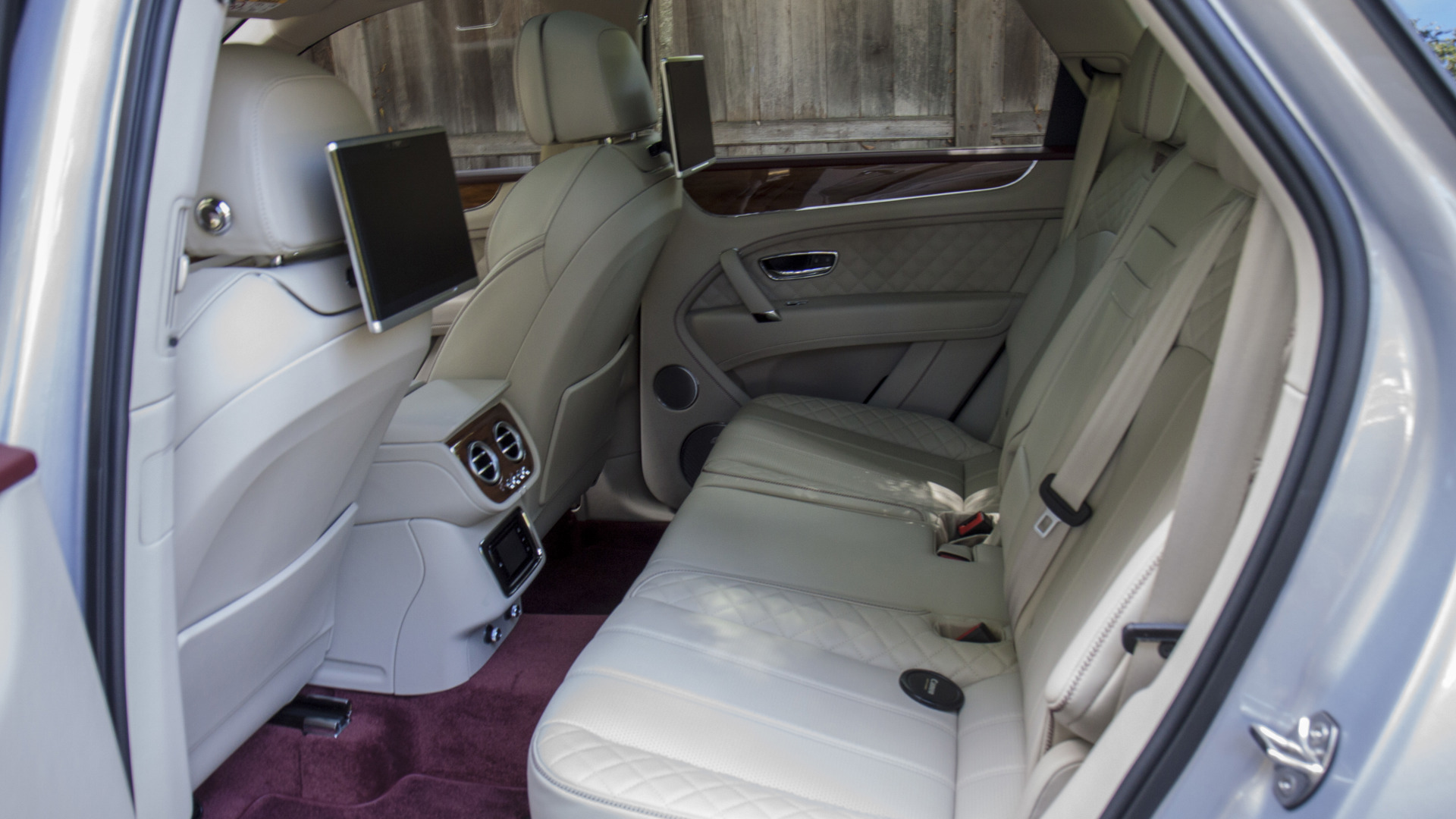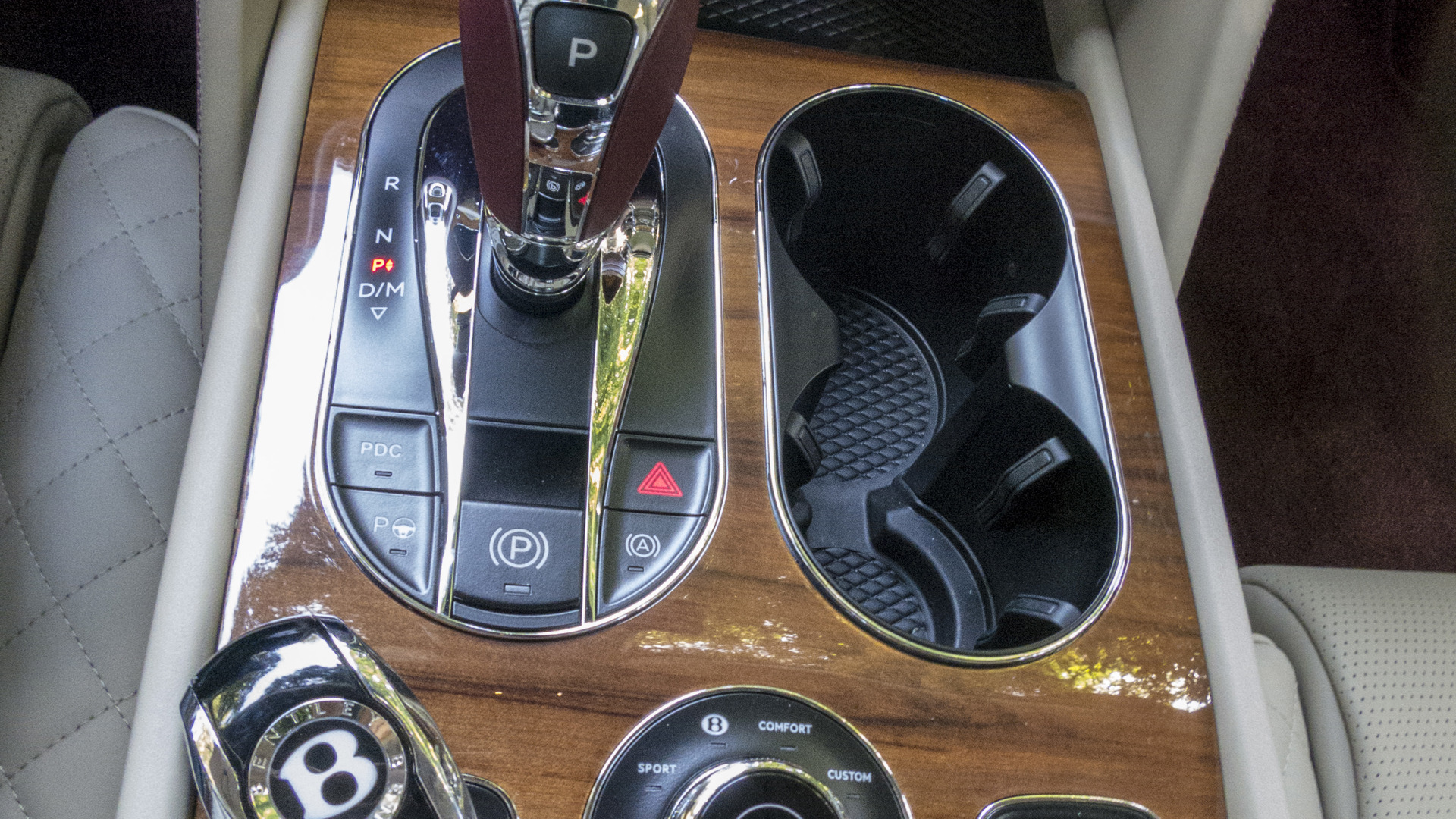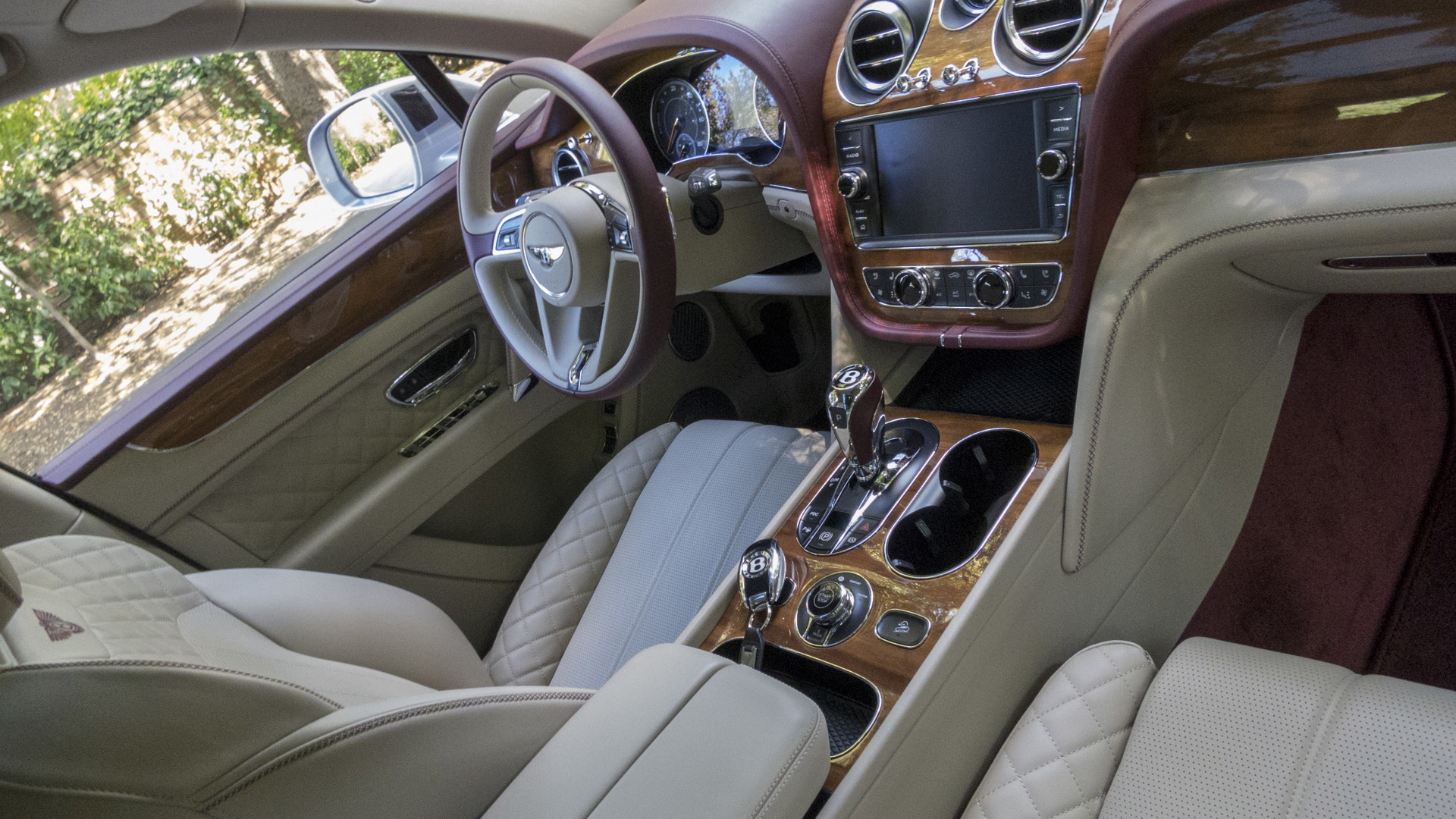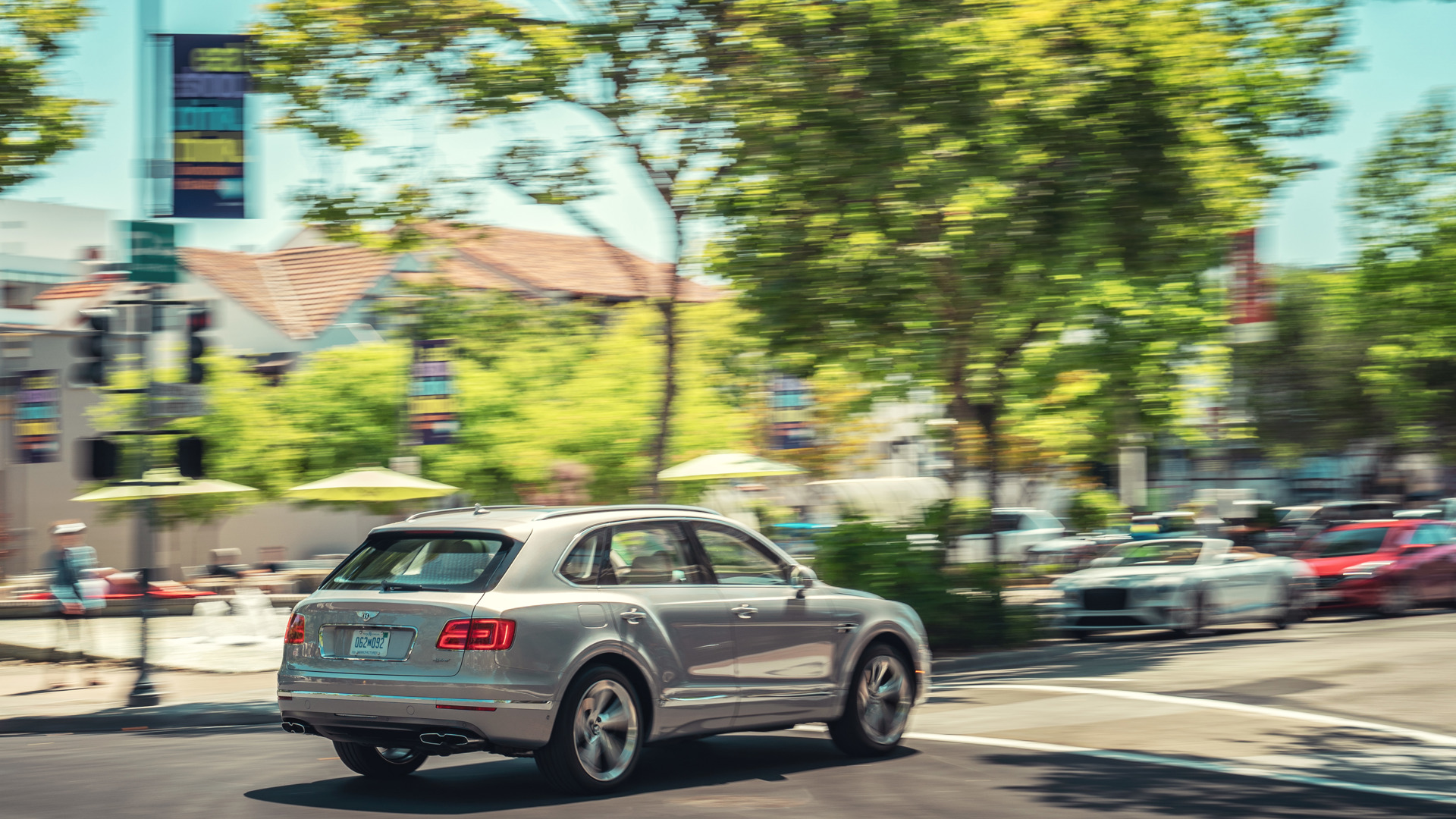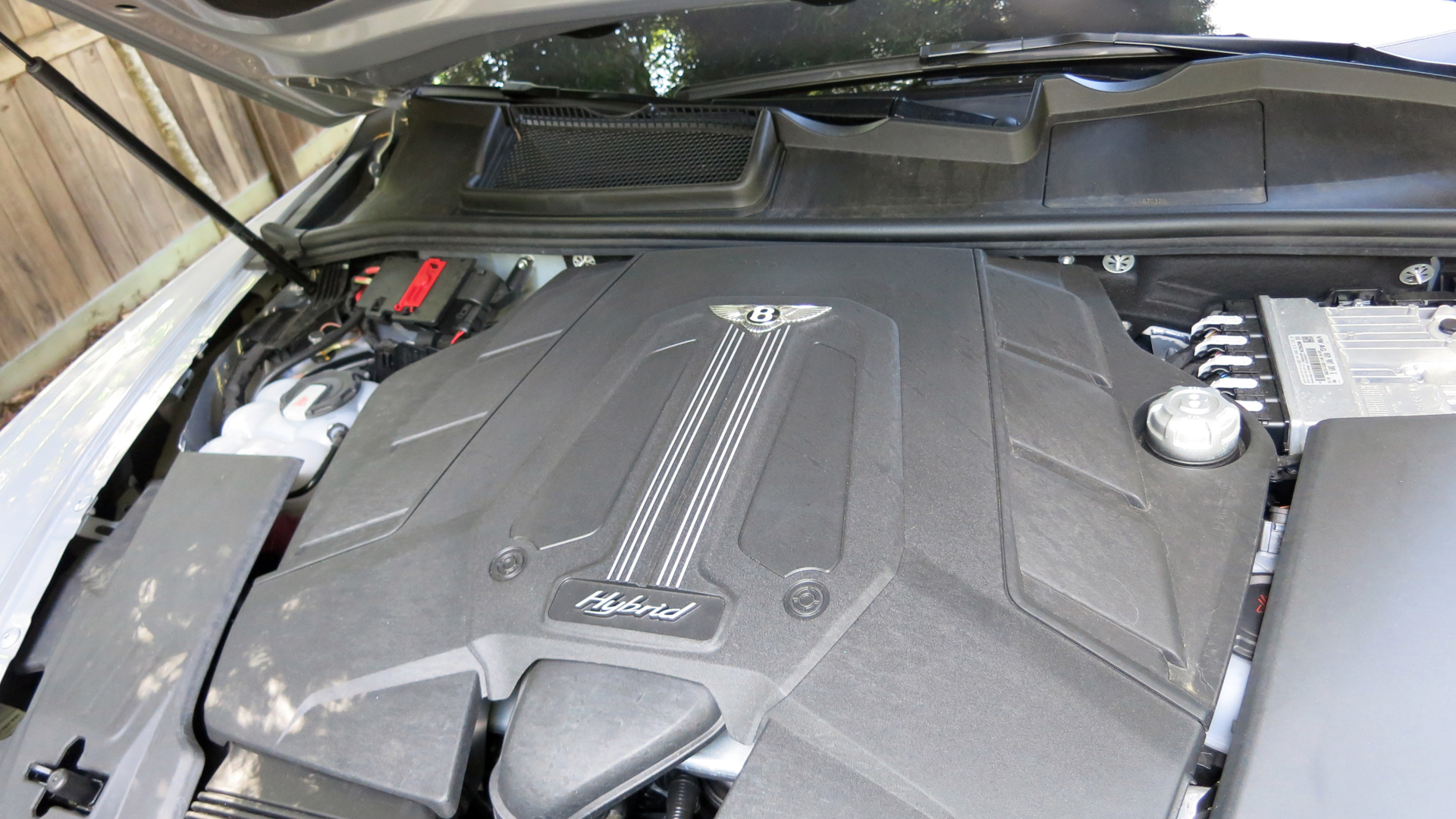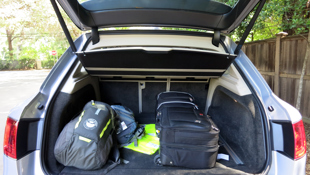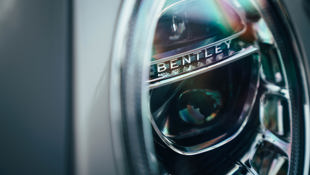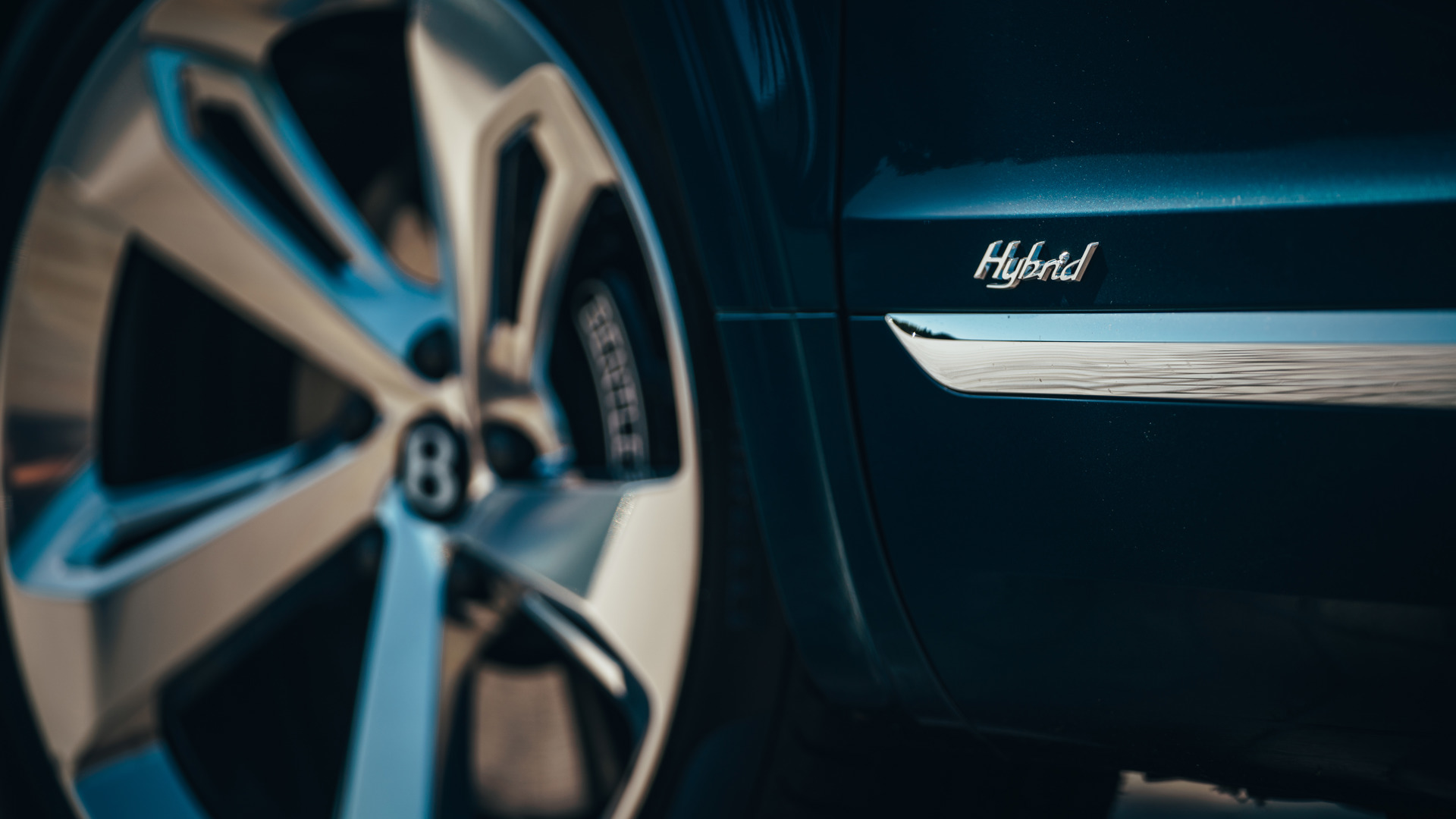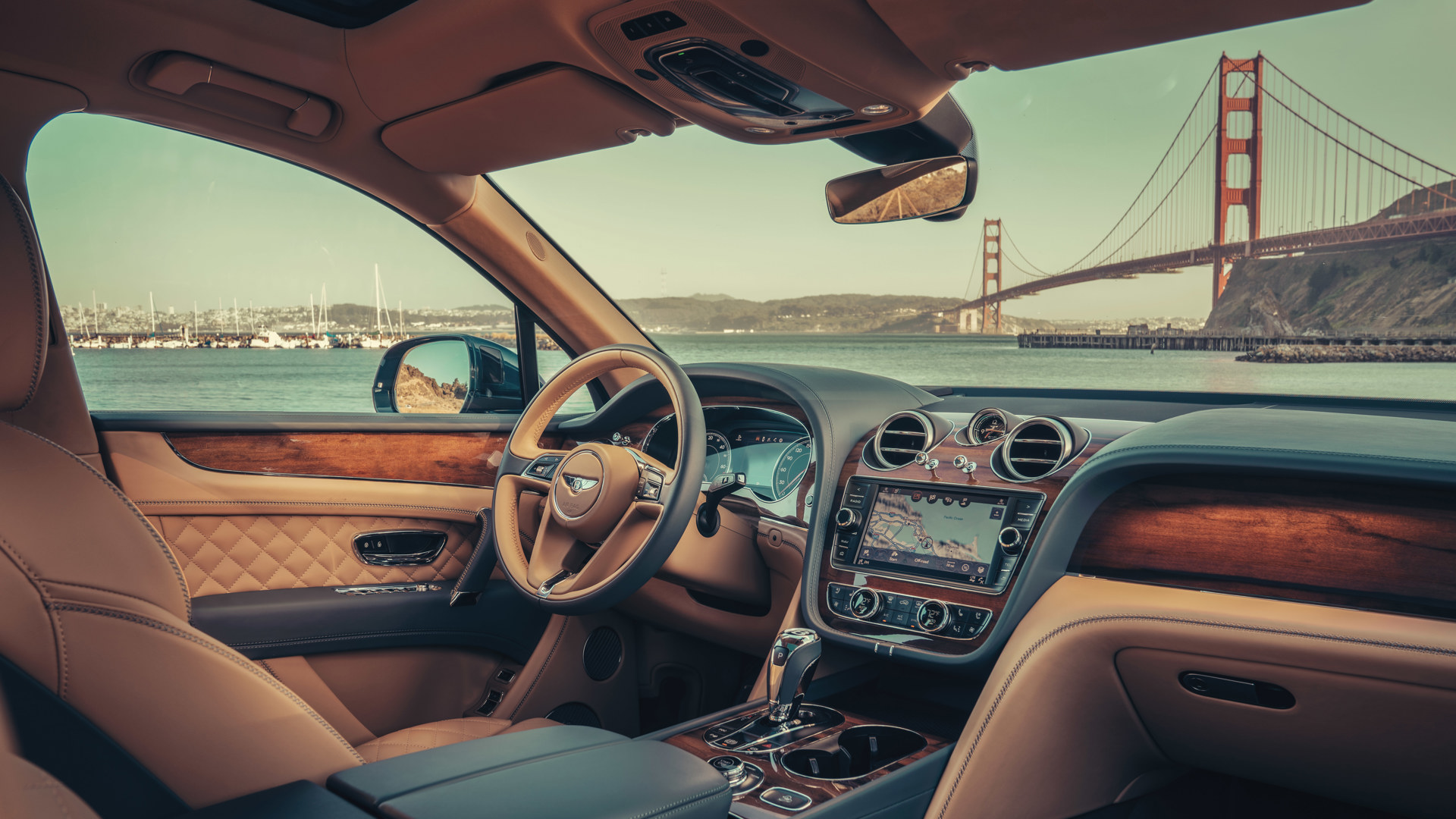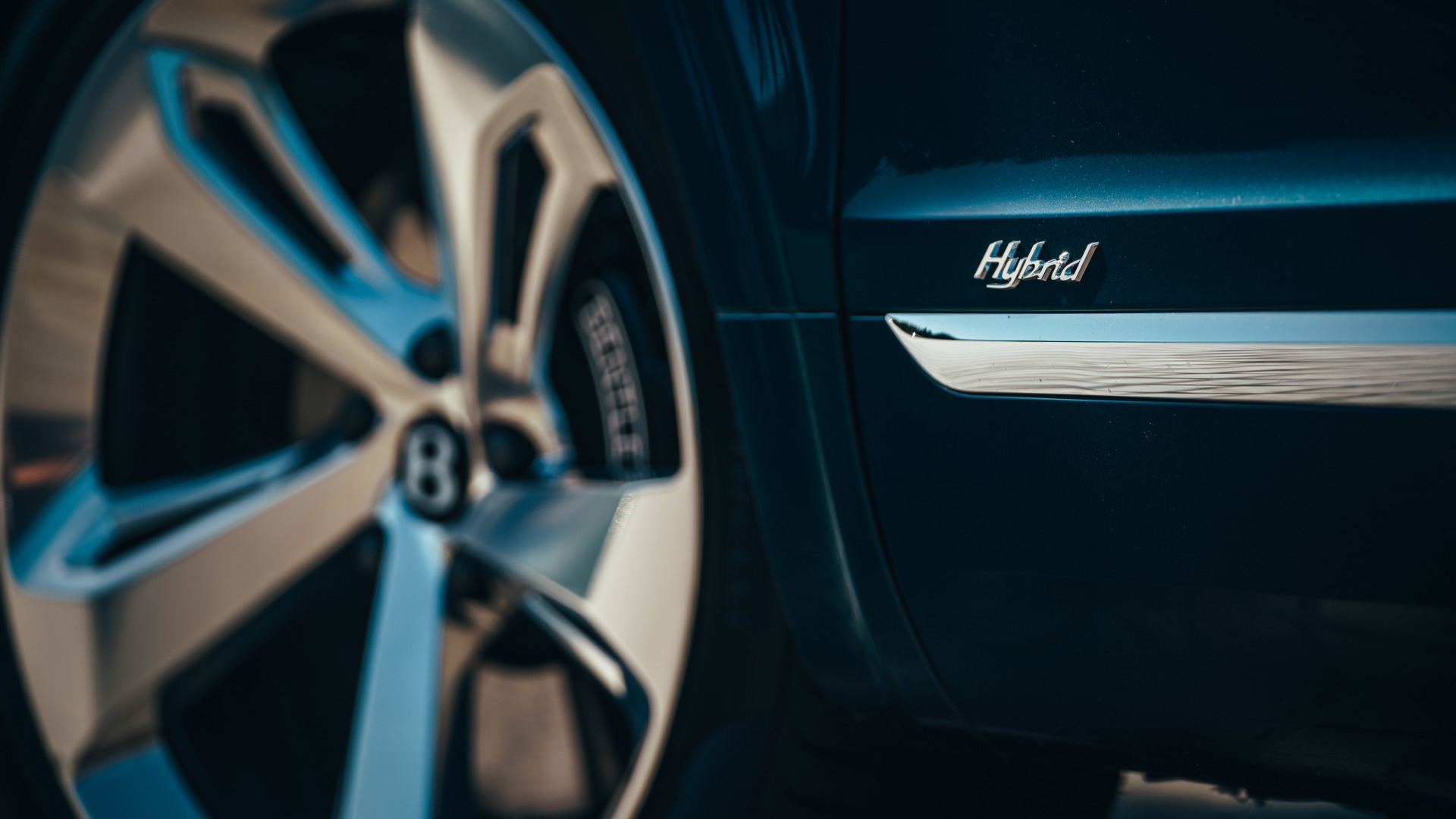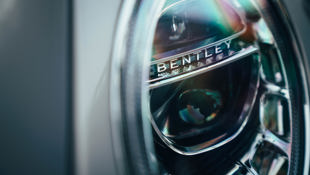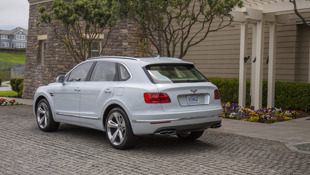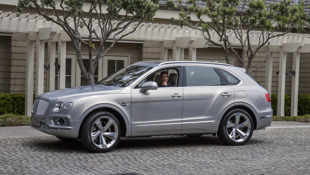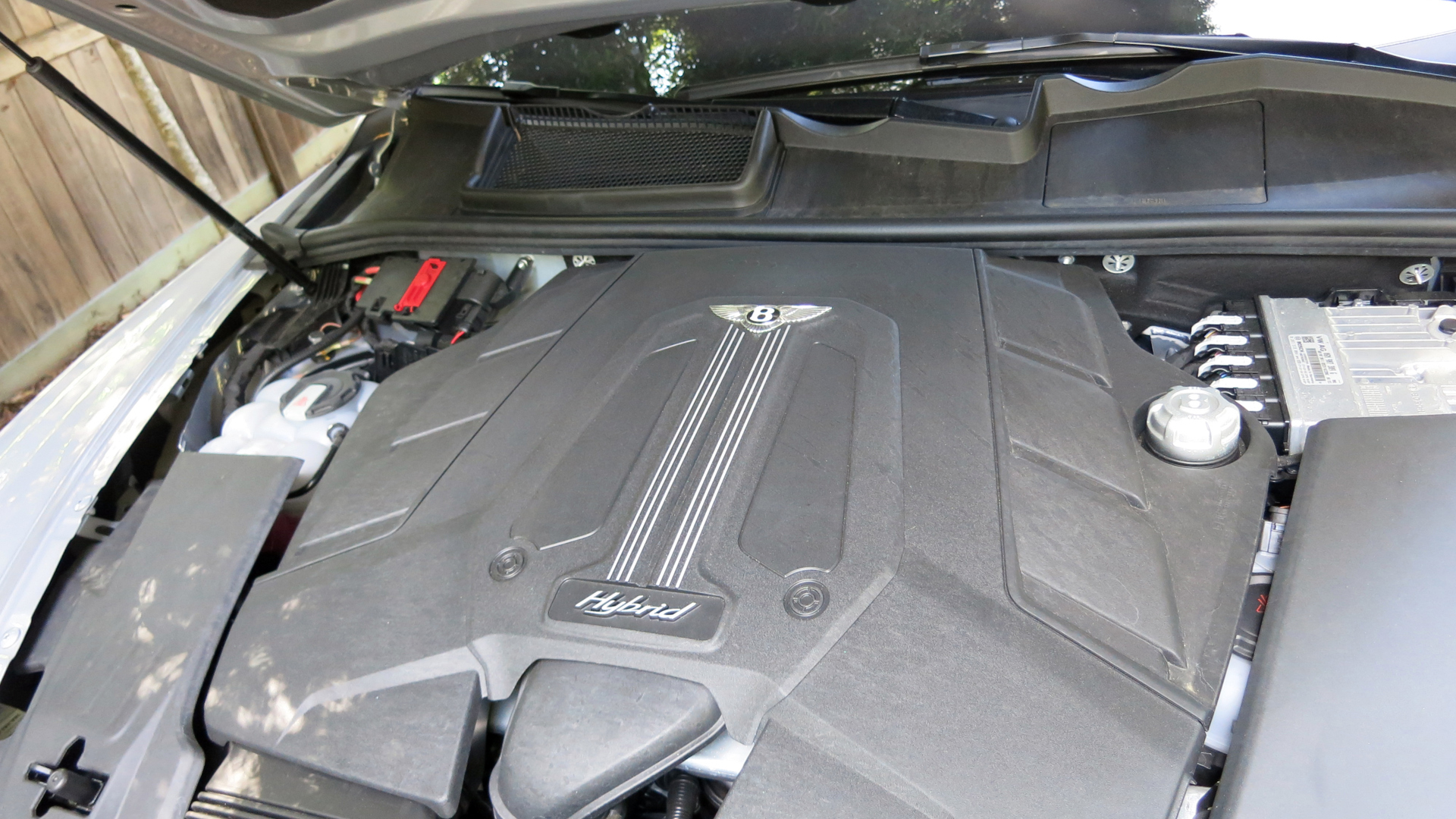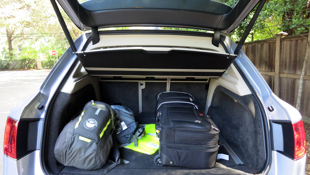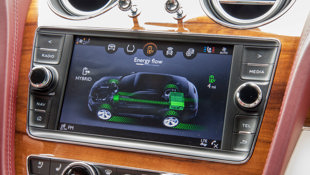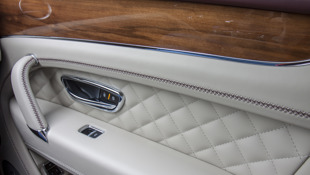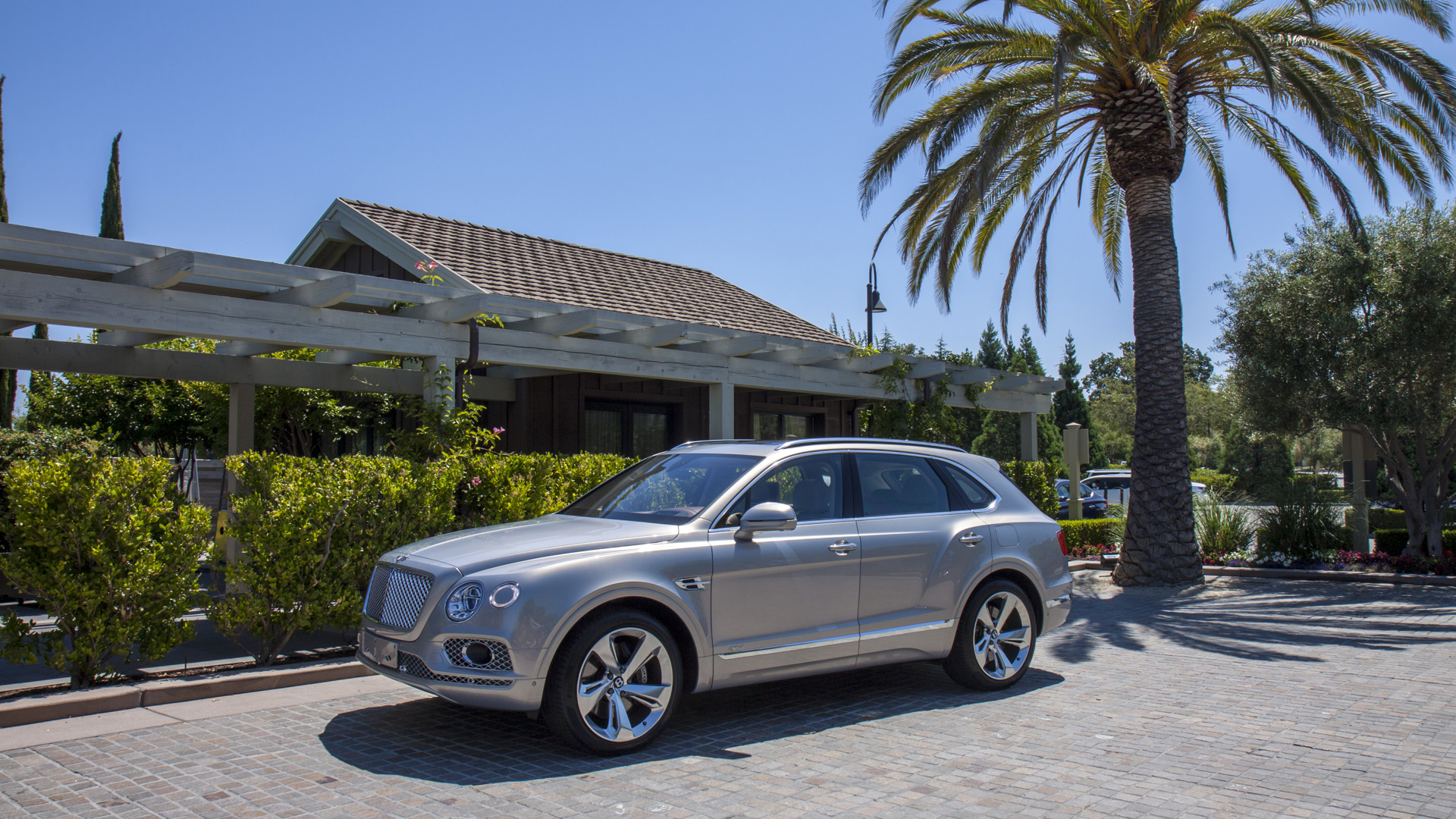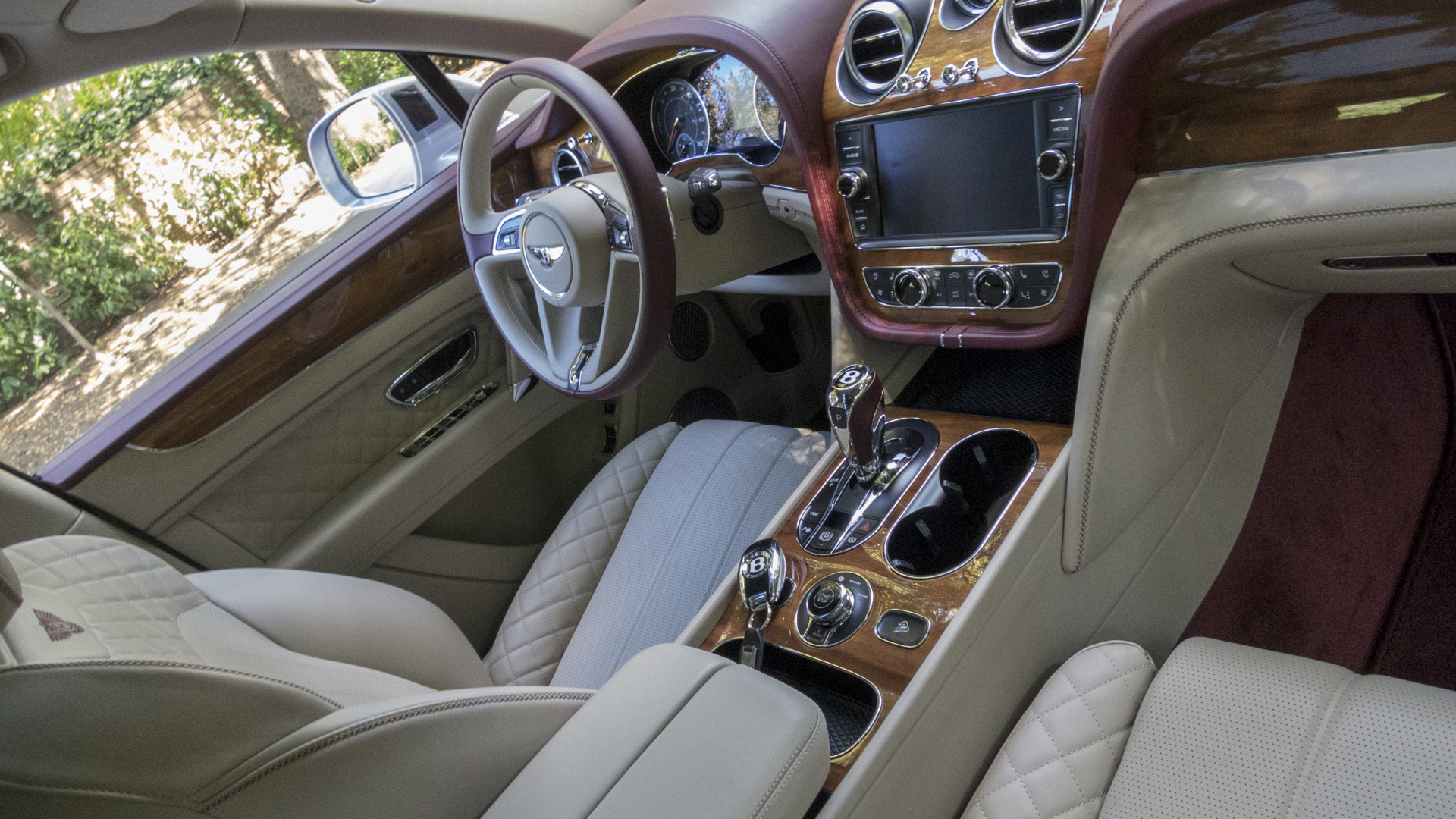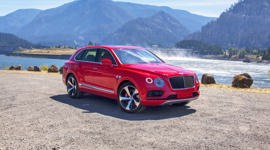PALO ALTO, California– “Fog rolls in on little cat feet” and so do we, whisper quiet, through the tree-lined streets of Atherton California, a Silicon Valley bedroom community with the highest median house prices in the country. The intense sun has burned off most of the Bay area’s infamous fog but in this shady enclave, everything is cool serenity. It’s curious that America’s tech millionaires choose such modestly tasteful residences instead of big, shouty mansions, and according to Bentley, they like their cars green and quiet too. Hence, the Bentayga Hybrid plugin we’re driving is a better suited to the area than a brash, high-powered exotic.
When you think “Bentley”, the last thing that comes to mind is fuel conservationism or frugality. Self-indulgent opulence maybe. But apparently some 35 percent of Bentayga buyers have expressed interest in hybrids and Bentley plans to have electrified options across their entire lineup by 2025.
Bentayga product line director Pete Guest said the SUV was the obvious choice for the company’s first ever hybrid, not only for the space required by the battery pack, but because it was designed from inception with electrification in mind. Their goal was to have the most refined hybrid SUV on the market, and they found that no other vehicle in their segment fit their benchmark ideal. According to Guest, the Flying Spur and Mulsanne became their benchmarked refinement targets, and the Bentayga Hybrid needed to meet the same level of “whisper quiet motoring”. A tough challenge when you consider all the ambient noise normally covered up by the sound of the engine, but the engineers have done a fabulous job of insulating the cabin from the outside world.
The Bentayga debuted in 2016 as the priciest, most powerful, and most luxurious SUV to date. We’ve since seen Lamborghini, Jaguar, and even Rolls-Royce jump into the popular and enormously profitable SUV ring. There are no exterior design changes to differentiate the new hybrid from the regular, all-wheel-drive Bentayga. A driver’s side charge port and some discreet badging are the only outward clues. Otherwise, it’s got the same Mulsanne-inspired, linebacker shoulders, Continental style haunches, and flat, wire-grilled face. Customers have the same available wheel design and colour choices as with the regular Bentayga – including the custom Mulliner Driving Specification package.
The cabin too, is not visibly different from the non-hybrid version, except that the battery pack takes up too much space under the rear floor to offer third row seating. No matter, it’s doubtful the affluent will be ferrying passengers about. The 17.3 kilowatt-hour battery pack that doesn’t encroach on luggage space, so the golf clubs will fit just as well in the Hybrid as they do in the W-12. Thanks to a 7.2-kilowatt onboard charger, a home wall outlet can recharge the Hybrid in 7.5 hours, and 2.5 hours if you plug into a Level 2 station. Unlike full electric vehicles, the Hybrid can’t be quick-charged, but there’s the combustion engine to fall back on if time is of the essence.
Inside, the luxurious, leather-wrapped environment boasts plump leather seats and a think, two-tone steering wheel that feels solid and substantial in the hands. We’d just driven the Continental GT a day previously, and the instrumentation looks slightly dated compared to the GT’s digital display. The ordinary 8-inch touchscreen is underwhelming, but the craftsmanship is otherwise exceptional, with elegant, knurled switchgear, vents and knobs that feature satisfying detents, and superbly stitched seam work.
As there should be in any six-figure luxury vehicle, there’s a full suite of driver assist safety technology, including Night Vision, and a head-up display. The connectivity system features Apple CarPlay (but no Android Auto) and there’s a downloadable Bentley Hybrid app for your smartphone that monitors range, cabin climate control, and charging station locator.
As part of the Volkswagen AG group, Bentley’s reaped the benefits of German engineering. Underpinning the Bentayga Hybrid is the same platform as the Audi A7. The hybrid system is derived from the Porsche Panamera Hybrid and uses a similar electric motor sandwiched between the engine and transmission. Under hood is a 3.0L turbocharged V6 making 335 hp and 332 lb-ft. of torque. Combined with the 94-kilowatt motor, the drivetrain produces a total of 433 hp and 516 lb-ft. That’s 100 hp and 52 lb-ft less than the Bentayga V8, plus the Hybrid is 525 lb heavier. And it’s more than 700 lbs more than the upcoming Porsche Cayenne Hybrid. Clearly, the Hybrid is not the one to buy if blinding speed is your primary objective. With a reported 25.7 km (16 mile) range of all-electric driving, it’s not going to be the emissions-free champion either. Overall, Bentley claims the Bentayga Hybrid can achieve 50 mpg-e in Hybrid Drive Mode.
Press the start button, and you expect to hear the engine roar to life, but the Bentayga remains silent, armed with electrification. On the road, the Hybrid feels much like the regular Bentayga – serene and beautifully compliant, even through the interminable road construction sections of our route. The 48-volt active roll suspension system, also found on the Continental GT, helps keep the 2,626 kg (5,789 lb) vehicle from wallowing in the corners.
Like most of its kind, the Bentayga Hybrid’s abundant torque makes it feel quick off the line, but the accompanying “whoosh” is less satisfying than a heady rumble. The familiar rotary controller lets you choose between Sport, Bentley, Comfort and Custom drive modes, as well as hybrid-only settings that manage the power supply. Hybrid Mode is recommended for medium length drives. It monitors the driving conditions and determines whether to run the vehicle on combustion engine, battery power, or some combination of both. It is not available when the vehicle is in the Sport drive mode.
EV drive offers electric-only power, and is useful for short trips within urban environments, perhaps where emissions are restricted. In this mode, the gas pedal is governed by a dynamic acceleration feature, so that only a minimum amount of pressure is required to move forward – step past the detente, and you’ll activate the engine. In Hold mode, the driver can choose to conserve electric power for later by running primarily on the combustion engine alone. However, some extra electric boost is available if needed when the driver stomps on the gas pedal.
Given the limited range of our electric-only travel, I engaged it only for our short drive through Atherton and neighbouring Menlo. For the most part, we left the vehicle in Hybrid Mode, and let the vehicle decide how to divvy up the power. In this mode, the Hybrid is a fairly smooth operator, with no roughness or telltale shuddering when switching back and forth. The integrated navigation system can also help manage the charge by alerting the vehicle when areas on the selected route will require more power, and even identify urban or emission-free zones.
Once we hit the freeway, I put the vehicle in Hold to run on combustion power only. The V6, mated to an 8-speed automatic transmission is powerful and smooth, if somewhat unremarkable. During a 71 km route that took us in a roundabout way from Palo Alto to Half Moon Bay, our information display showed 35 mpg, or 6.7L/100 km consumption. Presuming that the average Bentayga Hybrid owner uses it primarily for short distance commuting, that makes it a fairly frugal, ultra-luxury SUV.
Contrary to most hybrids, it’s also priced lower than its regularly powered variants. At $199,408, the Hybrid is not only the least expensive Bentayga, it’s the entry level vehicle for the Bentley brand. The Bentayga Hybrid should be available late this year.
